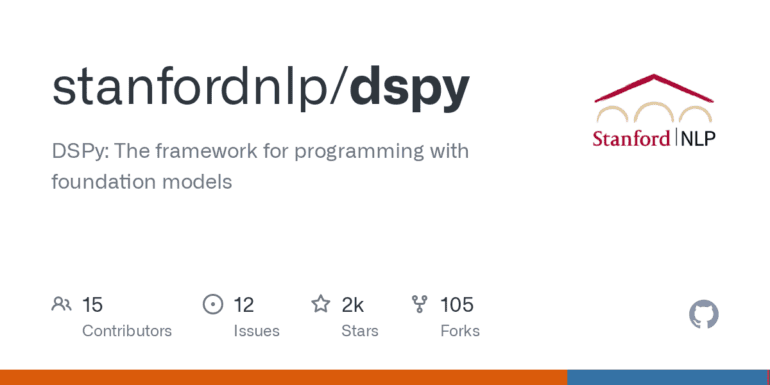TL;DR:
- Stanford introduces DSPy: AI framework for intricate tasks using Language Models (LMs) and Retrieval Models (RMs).
- LMs generate human-like text, RMs retrieve information from databases.
- DSPy combines LM text generation with RM data retrieval for complex tasks.
- Framework employs Pythonic syntax, fine-tuning, and an automated compiler.
- “Signatures” and “Teleprompters” streamline program compilation.
- DSPy minimizes labeling, excels in versatility for NLP/AI research.
Main AI News:
In the realm of cutting-edge AI, the fusion of Language Models (LMs) and Retrieval Models (RMs) stands as a transformative force. These sophisticated frameworks, exemplified by the likes of GPT-3, possess the remarkable ability to generate human-like text and extract pertinent insights from extensive databases. However, the crux lies in delineating the task at hand: a meticulous differentiation between text generation and data retrieval shapes the path to success.
Harnessing the capabilities of models such as GPT-3 necessitates the art of crafting prompts – succinct descriptions of tasks – which then guide the generation of text by the model. An iterative process of refining these prompts, molding their wording and structure, engenders the desired outcome. This process invariably entails a strategic blend of LM-generated text and RM-derived information, yielding an amalgamation that might encompass anything from succinct summaries to profound analytical revelations.
Breaking new ground in this arena, Stanford University researchers have unveiled DSPy – a groundbreaking framework designed to conquer intricate challenges through synergizing Language Models and Retrieval Models. DSPy, a moniker denoting its fusion of Pythonic syntax and robust functionality, introduces a constellation of techniques for prompt construction, LM fine-tuning, and the enhancement of reasoning and retrieval capabilities. The framework’s modular and declarative design empowers users to orchestrate LMs with unprecedented clarity and precision.
A hallmark of DSPy is its automated compiler, a prodigious engine that trains LMs to meticulously execute the declarative steps outlined in your program. Unlike conventional methods requiring manual intermediate-stage labeling, this compiler adeptly hones in on minimal data to refine performance. Here, the paradigm shifts from mere string manipulation to a realm of trainable, modular components, each contributing to a systematic whole.
Central to DSPy’s elegance are its two pivotal concepts: “Signatures” and “Teleprompters.” A “Signature” epitomizes a concise yet comprehensive blueprint, encapsulating the input/output dynamics of a DSPy module. In parallel, “Teleprompters,” bestowed with remarkable optimization prowess, emerge as indispensable tools within the DSPy toolkit. They deftly acquire the art of selecting prompts, propelling the efficacy of modules across diverse programs.
Each “Signature” comprises the quintessence of a sub-task, augmented by a series of input inquiries directed towards the LM. These questions seamlessly integrate with projected answers, a manifestation of anticipated LM responses. As for “Teleprompters,” they introduce an innovative form of remote prompting. DSPy’s distinctive value proposition lies in its minimal labeling requirement – a self-sufficient mechanism that discerningly generates intermediate labels, nurturing the user’s intricate pipeline involving multifaceted stages.
Emphasizing its uniqueness vis-à-vis conventional libraries, DSPy readily justifies its application based on the specific use case. Envisioned as an invaluable companion for NLP/AI researchers and pioneers exploring novel pipelines and intricate problem-solving paradigms, the DSPy framework boasts unmatched versatility. Stanford’s researchers underscore its accessibility, underpinning their commitment with an inclusive installation manual. Promising a rich learning journey, forthcoming releases include introductory tutorials and illuminating demos fortified with comprehensive reference material.
Conclusion:
The introduction of Stanford’s DSPy framework marks a significant stride in the evolution of AI capabilities. By seamlessly integrating Language Models and Retrieval Models, DSPy offers a potent solution for tackling intricate tasks. Its innovative approach to prompt construction, LM fine-tuning, and automated compilation positions it as a valuable asset in the NLP/AI landscape. As DSPy continues to empower researchers and practitioners, the market can anticipate enhanced productivity and problem-solving efficiency in various sectors that rely on advanced language and data-driven AI applications.

